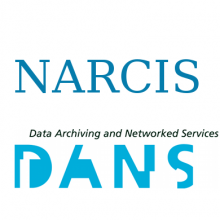Resource information
Designing land use plans for areas with multiple stakeholders is becoming an increasingly complex task. This paper presents a method to interactively develop land use plans with multiple stakeholders and conflicting objectives. In this method, spatial information plays a central role. Maps are used to communicate and exchange knowledge among policy-makers and stakeholders. This is done through a series of interconnected workshops, where interaction between stakeholders is prompted through the use of maps, decision support tools and an instrument called the 'touch table'. The touch table is a touch-enabled screen, which is used to support stakeholder collaboration through common visualization and spatial information handling. Three types of workshops with different map use are distinguished: Design (map as design language), Analysis (map as research model) and Negotiation (map as decision agenda). The main goal of a Design workshop is to identify problems concerning the planning of an area using spatial information to prompt knowledge exchange. Participants are invited to explore and develop land use plans using three reference plans as a defined playing field. With the help of simple drawing tools users can provide feedback digitally and design alternative plans by drawing polygons in free-form mode and subsequently allocating land use classes. In an Analysis workshop, participants are invited to evaluate and adjust any of the reference plans. To create a new plan, the reference plans are used as the canvas, on which participants can 'paint' land use changes. As users 'paint' new land uses on parcels, feedback on suitability is provided dynamically on the touch table. The main goal of a Negotiation workshop is to reach a land use plan that increases both the objective values of the stakeholders and the total value of a reference plan. Functionality is incorporated into the touch table to help participants suggest land use changes. Multi-Criteria Analysis (MCA) is used to provide feedback on the relative qualities of the plan compared to the reference situation. A multi-user interface allows participants to display on the map the parcels that are both best and worst suited for their own specific interests. Having 'negotiable' parcels shown on the map, users can trade their 'bad' parcels with each other and proceed to paint a new 'negotiated' plan. By making these trades-offs explicit, users are prompted to work as a team in a collaborative environment to reach a plan that is the best possible for all. We have tested our approach during Design, Analysis and Negotiation workshops with stakeholders of the Bodegraven polder in the Netherlands. Land use must be reallocated in Bodegraven to meet new water level conditions. Surveys conducted revealed the participants' preference for the touch table over printed maps. They liked especially the possibilities to choose and combine background maps, navigate across the area, see what others do and add qualifications to a plan. The touch table increased their awareness of new aspects of the area's problems. Participants thought it can stimulate significantly the discussions and considered it to be most suitable for government representatives.


